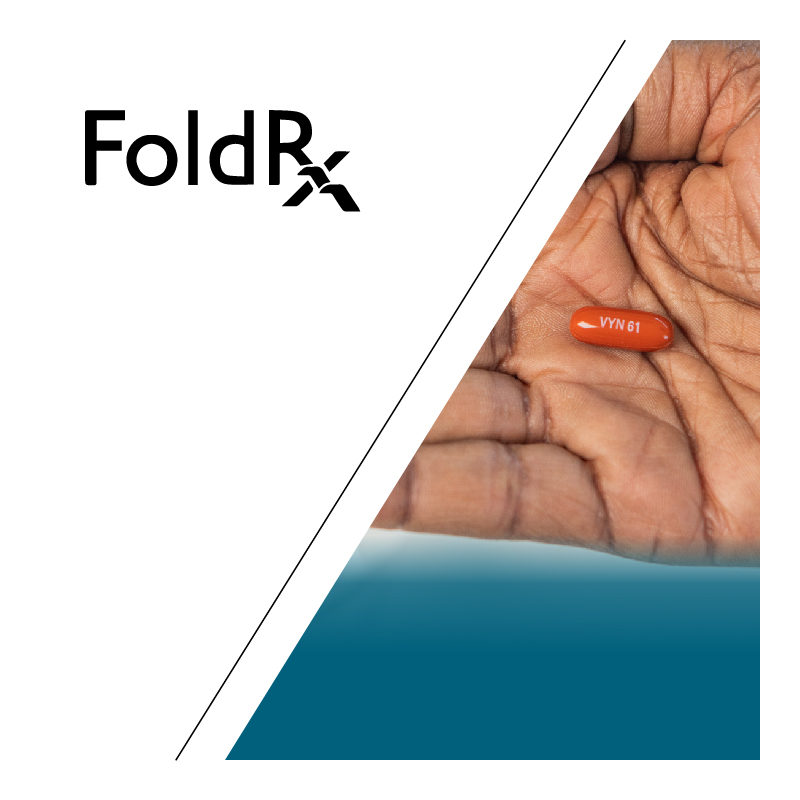Pioneering Progress: The Vyndaqel®/Vyndamax™ Story

Pioneering Progress: The Vyndaqel®/Vyndamax™ Story
The approval of Vyndaqel®/Vyndamax™ is paving the way for an expanding landscape of approved and investigational treatments for transthyretin amyloid diseases.
F-Prime is dedicated to advancing pioneering science and technologies that redefine patient care and treatment. Since 2002, F-Prime has facilitated the regulatory approval and commercialization of 33 products and drugs. In this series, Pioneering Progress, we showcase success stories behind the approval of drugs and products from our portfolio companies.
Understanding Transthyretin Amyloidosis, a Rare and Fatal Disease
Transthyretin amyloidosis (ATTR amyloidosis) is a rare, progressive, and fatal disease caused by the accumulation of misfolded proteins, known as amyloid, in the peripheral nervous system, heart, and other organs. This occurs when transthyretin (TTR)—a protein that transports the thyroid hormone thyroxine and retinol—misfolds and forms amyloid deposits. Normally, TTR exists as a tetramer, a stable cluster of four identical protein units. However, with aging or inherited mutations, these units separate and misfold, resulting in the formation of harmful amyloid fibrils, which are insoluble and resistant to degradation. ATTR amyloidosis manifests in several forms, with the two most common types being ATTR amyloidosis polyneuropathy (ATTR-PN), which affects the nerves, and ATTR cardiomyopathy (ATTR-CM), which impacts the heart.
ATTR-PN, which is estimated to affect 10,000-40,000 patients globally, leads to amyloid fibril-based damage to nerves, resulting in muscle weakness, loss of sensation, tingling, numbness, pain, and digestive track issues.1, 2, 3 Without prompt intervention, ATTR-PN is typically fatal within 10 years and, until recently, the only effective treatment was liver transplantation.2
ATTR-CM, on the other hand, is characterized by amyloid fibril accumulation in the heart tissue and results in symptoms resembling that of other heart conditions such as heart failure, further complicating diagnosis.3 While ATTR-CM was once considered very rare due to the diagnostic difficulty, recent improvements in diagnostic techniques have significantly increased incidence estimates, now with 5,000-7,000 new cases identified annually in the US alone4. Historically, individuals with ATTR-CM faced a poor prognosis, often experiencing severe health complications and a high risk of death within two to six years of diagnosis.5
With limited treatment options that target the root cause of ATTR amyloidosis, F-Prime saw a tremendous opportunity to bring new therapies to patients and transform how these diseases are treated and understood.
Advancing the Fight Against ATTR Amyloidosis
The understanding of ATTR amyloidosis took a major step forward with the work of Portuguese physician and leading ATTR amyloidosis researcher Teresa Coelho, Ph.D., who linked mutations in the TTR gene to the development of amyloid disease. Her research identified key disease-causing mutations, such as V30M and V122I, and uncovered a secondary mutation that interestingly led to TTR tetramer stabilization and better patient outcomes. Building on these findings, Jeff Kelly, Ph.D., a chemist at Scripps Research Institute and co-founder of FoldRx, proposed a new treatment approach—a small molecule drug designed to stabilize TTR and prevent misfolding.
By screening known drugs and applying structure-based drug design, Kelly’s team discovered Vyndaqel/Vyndamax, a small molecule drug that binds to TTR. By keeping the protein in its stable tetramer form, this approach helps prevent TTR from breaking apart, misfolding, and forming harmful amyloid deposits. With a unique molecule and promising early data, Kelly co-founded FoldRx in 2003 together with Susan Lindquist, Ph.D., former director of the Whitehead Institute for Biomedical Research.
“FoldRx came to us with a strong foundation of peer-reviewed scientific research supporting its hypothesis and a simple but innovative approach for addressing ATTR amyloidosis that offered curative potential,” said Stephen Knight, M.D., President and Senior Managing Partner at F-Prime. “Their solution made FoldRx an ideal investment opportunity that closely aligned with F-Prime’s goal to fund companies with transformative potential. Together, we were able to lay the foundation for Vyndaqel/Vyndamax’s eventual approval and bring forward a much-needed therapy for this life-threatening disease.”
Under the leadership of CEO Richard Labaudiniere, Ph.D., FoldRx initiated clinical development of Vyndaqel/Vyndamax, starting with a Phase 0 study to better characterize the typical ATTR-PN patient natural history—which at the time was entirely unknown—and continuing through completion of a Phase 2 study.
Based on encouraging data from the Phase 2 study, Pfizer acquired FoldRx and Vyndaqel/Vyndamax received European marketing approval in 2010 as the first therapy to treat ATTR-PN. Following additional clinical studies, Vyndaqel/Vyndamax was approved by the US FDA for the treatment of ATTR-CM in 2019.
From Breakthrough to Progress
The approval of Vyndaqel/Vyndamax as a first-in-class treatment for ATTR-PN and ATTR-CM set the stage for an influx of new drugs that address the diseases through various modalities. This growing list includes approved siRNA-based treatments Onpattro® (patisiran) and Amvuttra® (vutisiran), antisense oligonucleotide medicines WAINUA™ (eplontersen) and Tegsedi® (inotersen), small molecule drug Attruby™ (acoramidis), and an investigational CRISPR/Cas9-based approach, NTLA-2001.
Vyndaqel/Vyndamax highlights F-Prime’s role in advancing innovative treatments that transform patient care. Its success has helped drive progress in the field, paving the way for more life-saving treatment options for patients. This journey—from groundbreaking research to a first-in-class therapy—demonstrates the power of scientific innovation and strategic investment in changing the course of rare, fatal diseases.
References:
- Schmidt HH, Waddington-Cruz M, Botteman MF, et al. Estimating the global prevalence of transthyretin familial amyloid polyneuropathy. Muscle Nerve. 2018;57(5):829-837. doi:10.1002/mus.26034
- González-Duarte A, Conceição I, Amass L, Botteman MF, Carter JA, Stewart M. Impact of Non-Cardiac Clinicopathologic Characteristics on Survival in Transthyretin Amyloid Polyneuropathy. Neurol Ther. 2020;9(1):135-149. doi:10.1007/s40120-020-00183-7
- Pfizer. Understanding This Rare Disease Called ATTR Amyloidosis. Accessed January 22, 2025.
- Jain A, Zahra F. Transthyretin Amyloid Cardiomyopathy (ATTR-CM). StatPearls. 2023.
- Rozenbaum MH, Garcia A, Grima D, et al. Health impact of tafamidis in transthyretin amyloid cardiomyopathy patients: an analysis from the Tafamidis in Transthyretin Cardiomyopathy Clinical Trial (ATTR-ACT) and the open-label long-term extension studies. Eur Heart J Qual Care Clin Outcomes. 2022;8(5):529-538. doi:10.1093/ehjqcco/qcab031
- Castaño A, Drachman BM, Judge D, Maurer MS. Natural history and therapy of TTR-cardiac amyloidosis: emerging disease-modifying therapies from organ transplantation to stabilizer and silencer drugs. Heart Fail Rev. 2015;20(2):163-178. doi:10.1007/s10741-014-9462-7


